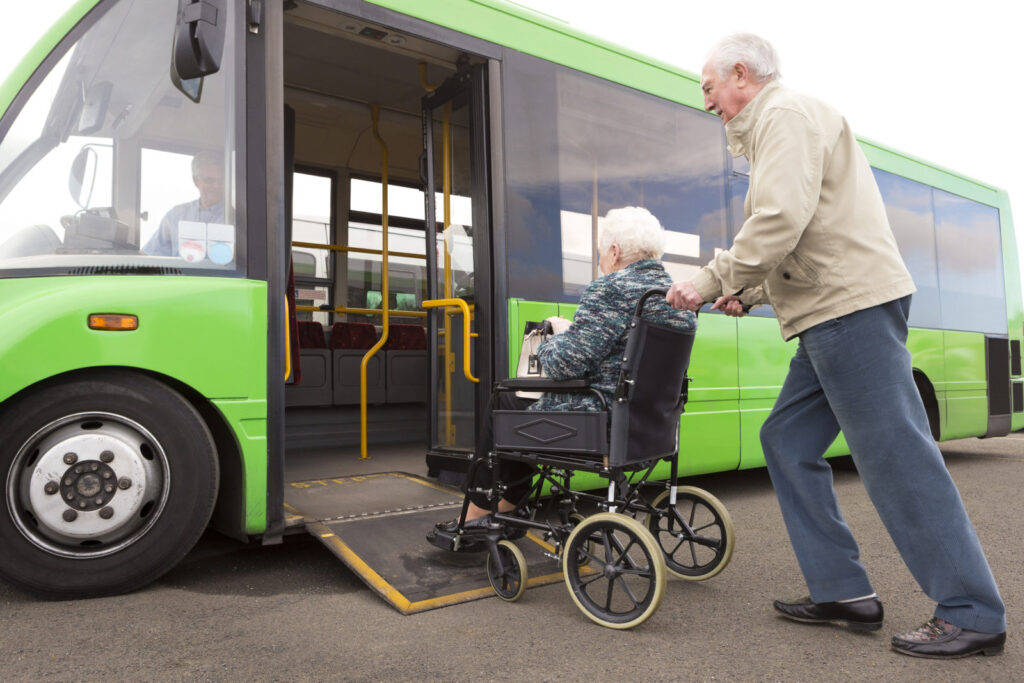
How can healthcare organizations help address social determinants of health?
By Medecision
Isaiah, who struggles with hypertension, has been trying to take his doctor’s advice to eat healthier. But fresh fruits and vegetables are hard to find in the area of town where he lives, with the nearest well-stocked produce department a bus ride across town. Transportation barriers, an unpredictable work schedule and an unstable housing situation further complicate the picture, forcing him to miss appointments and occasionally fail to take his medications as prescribed.
What should your hospital or health system be doing to help Isaiah?
While Isaiah is a fictional person, similar realities regularly pose healthcare challenges that—as providers are increasingly realizing—require non-medical solutions alongside the medical ones. These non-medical solutions target social determinants of health (SDOH), which can play an outsize role in health outcomes, utilization and costs. SDOH are also at the heart of many of the inequities and gaps that have been highlighted in recent years, especially during the pandemic. Care managers and health systems can use SDOH and other data to develop a thorough picture that will help them create effective interventions and manage risk, whether they are targeting an individual patient or a population.
An effective SDOH strategy should be a part of any hospital or health system’s approach to healthcare, especially those that are moving to value-based care (VBC) models. In this blog post, we’ll look at some of the key elements of such a strategy.
It All Revolves Around Actionable Data
Isaiah’s case presents an example of how non-medical factors can shape an individual’s well-being. His food, transportation, employment and housing uncertainties all make it more difficult for him to be proactive in his own health. But the more information that those involved in his care have about Isaiah’s situation, the better equipped they’ll be with insights on how best to reach out to him, help him obtain necessary resources, create an invention or whatever else needs to be done to get him back on track.
Once we have the information, in other words, we need to know how best to use it to bring about an improved outcome.
The growing emphasis on SDOH is tied to increased awareness about healthcare’s need to address the whole person. That means going well beyond the symptoms being treated and confronting the root causes, including environmental contributors.
And that calls for actionable data. In today’s hyperconnected world, we certainly are not lacking in data, but for data to be useful and effective, it must be:
- Does the information reflect reality?
- Is it as complete as possible?
- Does it have a bearing on the current situation?
- Is it up to date and received when needed?
- Easy to access. Can those who need the information find it when they need it?
- Easy to follow. Does it make sense to those accessing it?
Regardless of the data’s accuracy, thoroughness, relevance and timeliness, it will not be very useful if it is not easy to access and follow. That’s where interoperability and standardization come in.
The Need for Interoperability and Standardization
For the data to be easily accessed, we need interoperability. For the data to be easily followed, we need standardization. “Standards-based inoperable technology should account for components outside of traditional healthcare, i.e., stable housing, access to healthy food, and reliable transportation,” says the nonprofit Healthcare Information and Management Systems Society (HIMSS).
HIMSS defines interoperability as “the ability of different information systems, devices and applications (systems) to access, exchange, integrate and cooperatively use data in a coordinated manner, within and across organizational, regional and national boundaries, to provide timely and seamless portability of information and optimize the health of individuals and populations globally.”
The Gravity Project, a national public collaborative devoted to the standardization of health and social data for health equity, has pinpointed 18 domains of SDOH data that can be captured from electronic health records (EHRs): food insecurity, transportation insecurity, elder abuse, financial insecurity, unemployment, stress, food deserts, homelessness, intimate partner violence, inadequate housing, neighborhood safety, veterans, housing instability, material hardship, environment, education, social isolation and racism. Each of these areas has the potential to affect the health of individuals and populations.
But how is the information being accessed and used?
When vital information about an individual’s health is shared, those of us entrusted with their care must be speaking the same language. That requirement also extends to the technologies that inform, guide and expedite the crucial decisions we make every day as healthcare providers. The creation of SDOH data standards that guide strategy and inform healthcare workflows enables health systems to gain a broader understanding of their patients—as well as engage them to take a more proactive role in their own health.
In an October 2021 panel discussion sponsored by HIMSS, experts in SDOH data discussed recent developments in the effort to improve interoperability and the exchange of health information. The integration of SDOH data with traditional health information is key to this effort, which seeks to use such data to identify gaps and other challenges, increasing the impact of social services on the overall well-being of individuals and populations.
The Office of the National Coordinator for Health Information Technology (ONC), which coordinates nationwide efforts to improve health information technology and the electronic exchange of health information, sets 10-year targets for SDOH-related objectives. A key pillar of the federal health IT strategic plan for 2020–2025 is to “capture and integrate social determinants of health data into EHRs.”
Health equity barriers identified by the ONC include structural, institutional, political, financial and analytical challenges—each of which comes with opportunities for health systems, social services organizations, states and health IT experts to “align and harmonize standards” for capturing, using and exchanging data.
Among the tools that facilitate these efforts are Fast Healthcare Interoperability Resources (FHIR), an internet-based technology for exchanging health data, and Application Programming Interfaces (APIs), which enable applications to interact and share data. FHIR offers a free API.
What to Do With All That Data
The data is out there for providers and others involved in the care of individuals and populations to collect, document, report, make accessible and use.
In addition to being the right thing to do, addressing SDOH makes financial sense because it helps create more effective treatment plans, leading to better outcomes, lower utilization and reduced cost, in addition to helping discover and close disparities and gaps.
Here is a quick look at six strategies to understand SDOH (for expanded details and more information about addressing them, download our free infographic):
- Start with member/patient experience to identify data about SDOH and implement interventions.
- Build collaborative care teams.
- Partner with community organizations.
- Leverage technology.
- Involve individuals, caregivers and supports.
- Measure your impact.
Having actionable data brings a great responsibility—namely, to act on it! The result will be better outcomes and an improved healthcare experience for individuals like Isaiah whose healthcare struggles are made even more challenging by SDOH.



About The Author: Medecision
Fully delivering on the promise of data — and making the business of healthcare simpler and more successful — Medecision offers a whole new world of possibilities. The company's flagship offering, Aerial™, stands as the market's most extensible clinical data platform. It offers complete contextual awareness of members and automates next best actions — simple campaigns, complex care management, utilization approvals, and more — for optimal health outcomes.
Aerial is not only quick to deploy, it is easy to manage. The platform's effectiveness in reducing both medical and administrative costs, coupled with its role in improving the member and patient experience, has made it the preferred choice for health plans and care delivery organizations. Presently, Aerial is instrumental in catering to over 10% of the U.S. population, marking a significant milestone in advancing healthcare efficiency and effectiveness.
More posts by Medecision